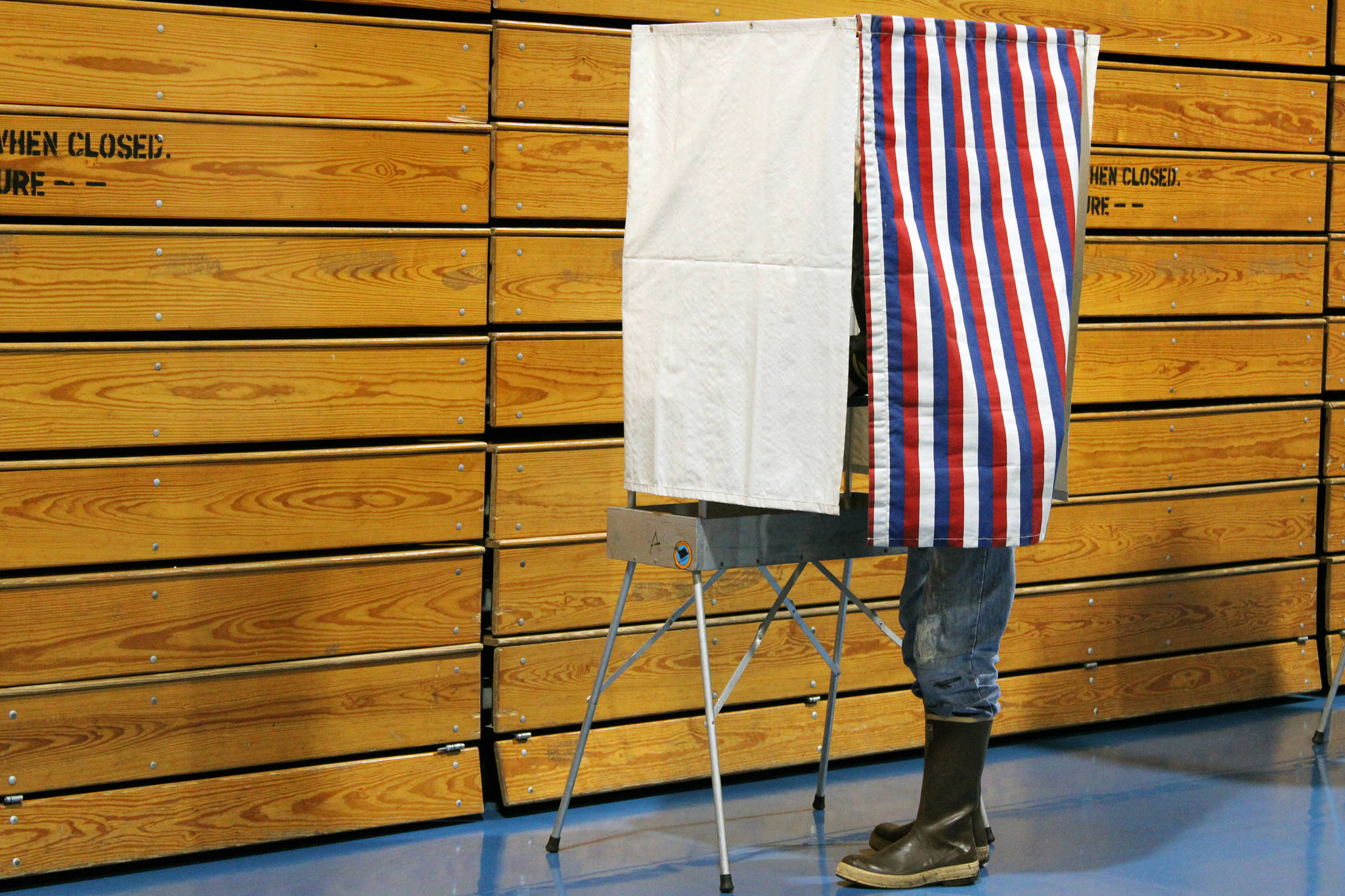Polling stations around Juneau had a slow day during the primary elections as many voters absented themselves from the public stations.
Within the first 90 minutes, only about 16 people had shown up to Mendenhall River Community School to cast, said election official Taylor Zuiderduin. He sat about six feet apart from his fellow officials at tables that offered the usual paperwork alongside sanitizer, gloves and face masks.
Zuiderduin and his fellow officials said they were unsure if the slow turnout was due to increased absentee voting, pandemic-related concerns, confusion over a relatively recent change in precinct location or a typical slow morning. Election officials said voting tends to pick up after people get off work.
At least some voters were banking on sparse attendance.
“Our experience voting here is, there’s no congestion, there’s no lines,” said Tim Polasky, who was joined by his wife, Jacqueline, to brave the non-crowds and vote in person.
Plus, Jacqueline said with City and Borough of Juneau’s municipal election moving to mail-in ballots, the primary election offers a chance to see what to expect in November’s election. It also was a way to avoid burdening the United States Postal Service.
“I didn’t want to put any more pressure on the post office,” she said.
In Douglas, poll worker Shelly Mangusso met voters at the door to inform them of the special health protocols in place this year. Mangusso handed one voter a pair of disposable gloves to use while voting. Voters trickled in slowly to the Douglas Community Building to cast their ballots for who and what they want to see in November.
[Sullivan and Gross headline primaries for Senate seat]
Picking up steam
At the Alaska State Museum, voting was sluggish initially, but increasing in speed as the morning wore on.
“It was a pretty slow start, but it’s starting to pick up,” said Bridget Goertzen, who was chairing the museum’s polling station, different from her usual polling station in Lemon Creek. “It’s gonna be a surprise. This is my first time chairing this precinct.”
[House race is poised to be a rematch]
Voters were being careful and wearing PPE, said Jim Carroll, a five-time volunteer and one of the workers at the polling station. All stations were laid out with health concerns in mind as well, Goertzen said.
“We’re all as spaced out as we possibly can be,” Goertzen said.
Voting stations have masks, gloves, and hand sanitizer available for voters, Goertzen said. Workers wore face shields, gloves and wiped down pens and voting booths regularly.
“We anticipate an uptick in absentee and question ballots,” Goertzen said.
Slightly more than 30 voters had come by 10 a.m, Goertzen said that number was likely to increase quickly as people took lunch breaks.
As of 3 p.m., fewer than a thousand voters had appeared in person, according to a news release from the Division of Elections.
Signing
A competitive year
Two of Alaska’s three-person Congressional delegation are up for re-election this year, and two of them have strong challengers. Rep. Don Young, R-Alaska, is being challenged by Alyse Galvin, who tried to wrest away Young’s decades-long hold on the seat in 2018 as well. Dr. Al Gross is vying for Republican Sen. Dan Sullivan’s seat.
Gross and Galvin are both Democratic-endorsed independents. Alaska’s voting laws allow political parties to decide who is eligible to vote in their primaries, and the state Democratic Party allows independent voters to cast ballots in theirs. Though Gross and Galvin are considered favorites for the Democratic Primary, both have at least two competitors for the nomination.

